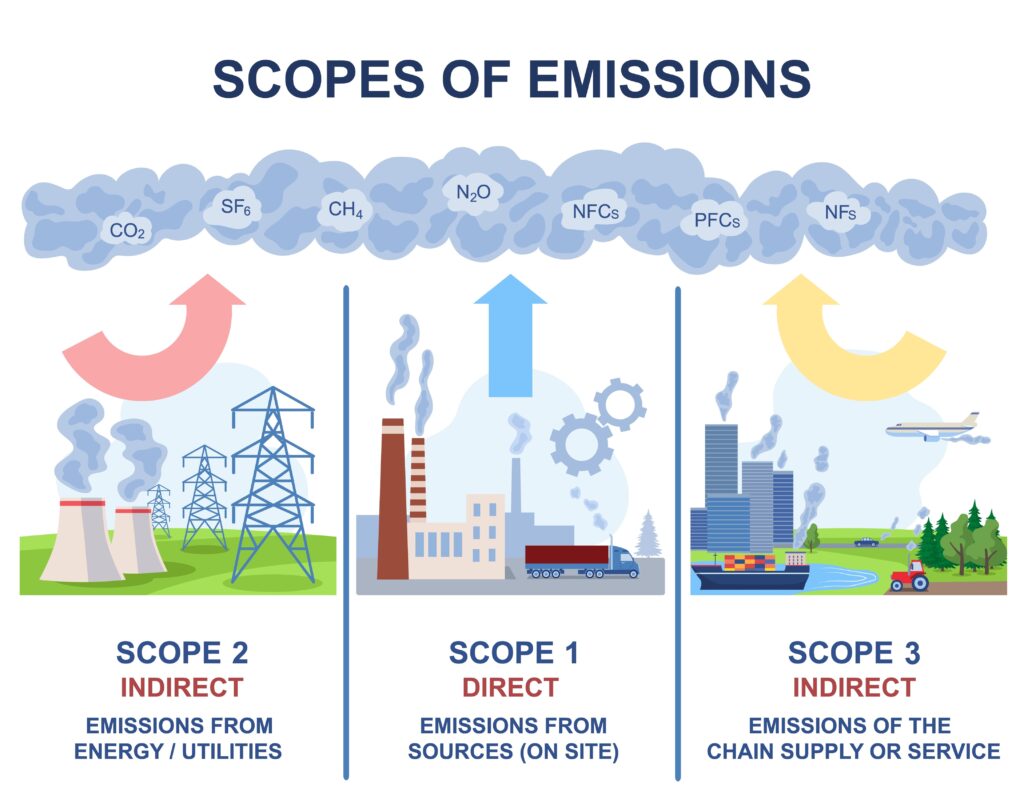
The corporate climate change is on utmost scrutiny. Now you must think that the automotive industry must be the primary element in it isnt it? But, compared to it, the pharmaceutical business’s emissions intensity is around 55% higher. This pushes the pharma industry to examine its sizable carbon footprint. Scope 3 emissions are a great challenge. Despite companies’ efforts to lower scope 1 and 2 emissions, this remains an issue.
Scope 3 emissions are indirect CHG emissions from activities that are not controlled by the company. For the pharmaceutical industry, it includes transportation, purchased goods/services, etc. That being said, we are looking at a change. Pharma companies are now committing to zero emissions. But how is the pharmaceutical industry tackling it? Let us take a look:
Understanding scope 3 emissions
To tackle the emissions, Pharma companies need to possess accurate assessment or granular data. A trend has begun where leading Pharma companies have begun mapping out emission hotspots. They do it across their value chain using standards like GHG protocol corporate value chain standard.
It involves some complex data collection across various tiers of suppliers and distributors. This quantifies emissions from activities like raw material production, contract manufacturing, etc. As a result, it helps to target the reduction efforts at the pain points. Over 60% of scope 3 emissions are driven by procurement of ingredients, packaging, etc for most major companies. Transportation and distribution also form a sizeable share. So the reports helps to set science based targets and effective results.
Driving supply chain collaboration
No pharma company can move the needle alone. This is especially the case when emissions are a result of activities like procurement, etc. Hence, the industry is focusing more on collaboration between suppliers, distributors, contract manufacturers, and other players.
This strategic partnership opens up doors for transparency. Moreover, sustainability goals, regular reports, eco-friendly solutions are mandated through this partnership.
Transitioning to Renewable Energy
Purchased electricity accounts for a major share of scope 3 emissions. The industry is now taking steps to procure renewable energy across their operations and value chain. Strategies include:
- Installing onsite solar, wind, or other renewables at owned manufacturing facilities/ officers. For instance – Novartis, GSK, and Johnson & Johnson have deployed large onsite solar capacity.
- Procuring offsite renewable electricity through power purchase agreements with utilities and clean energy developers. For eg – Pfizer has signed a virtual PPA for over 470 GWh annually.
- Working with suppliers and manufacturers to switch to renewable power. AstraZeneca helped Taiwanese supplier CMO obtain an onsite solar system.
- Advocating for increased availability of affordable clean energy options with policymakers.
- Setting ambitious renewable electricity targets for the entire value chain. For eg – Novo Nordisk’s aim for 100% renewable power across operations and supply chain.
Investment in sustainable packaging
Pharmaceutical product packaging accounts for sizable scope 3 emissions. This is from raw material production, manufacturing, and end-of-life disposal. To curb these impacts, pharma companies are driving multiple sustainable packaging initiatives:
- Collaborating across the packaging value chain. So it is with suppliers, manufacturers, and waste management partners. It implements circular solutions.
- Joining decarbonization program or industry groups. This is to align on standards and best practices. These are the practices that enable the systemic change needed in packaging sustainability.
- Investing in innovation around biodegradable materials, digital watermarking, refillable/reusable packages, and other advances to close the loop.
- Educating consumers on properly disposing of or returning packaging. It is for recycling through labeling and awareness campaigns.
- Taking a holistic view – rethinking packaging design, materials procurement, manufacturing, reuse models, recovery processes as an integrated system.
- Using procurement and R&D influence over packaging design and production. This is to significantly improve lifecycle impacts.
What should your pharma company do?
Sustainability in the pharmaceutical industry is paramount to ensure its medicines are affordable, accessible for a long period of time. To ensure this, powerful collaborative action is taken and discussed upon in a decarbonization program or conferences. These programs ensure operational changes at the optimum level are implemented by all. That too without compromising efficiency.
Moreover, innovation is disucssed as well to stay relevant for the longest period of time. This makes it necessary for companies like you to attend one, grow and connect with other leaders. One of such event is coming up soon organized by future bridge. The top pharma companies and professionals will be witness to it.
To book a seat for the event, visit https://netzero-events.com/2nd-net-zero-for-life-science/




